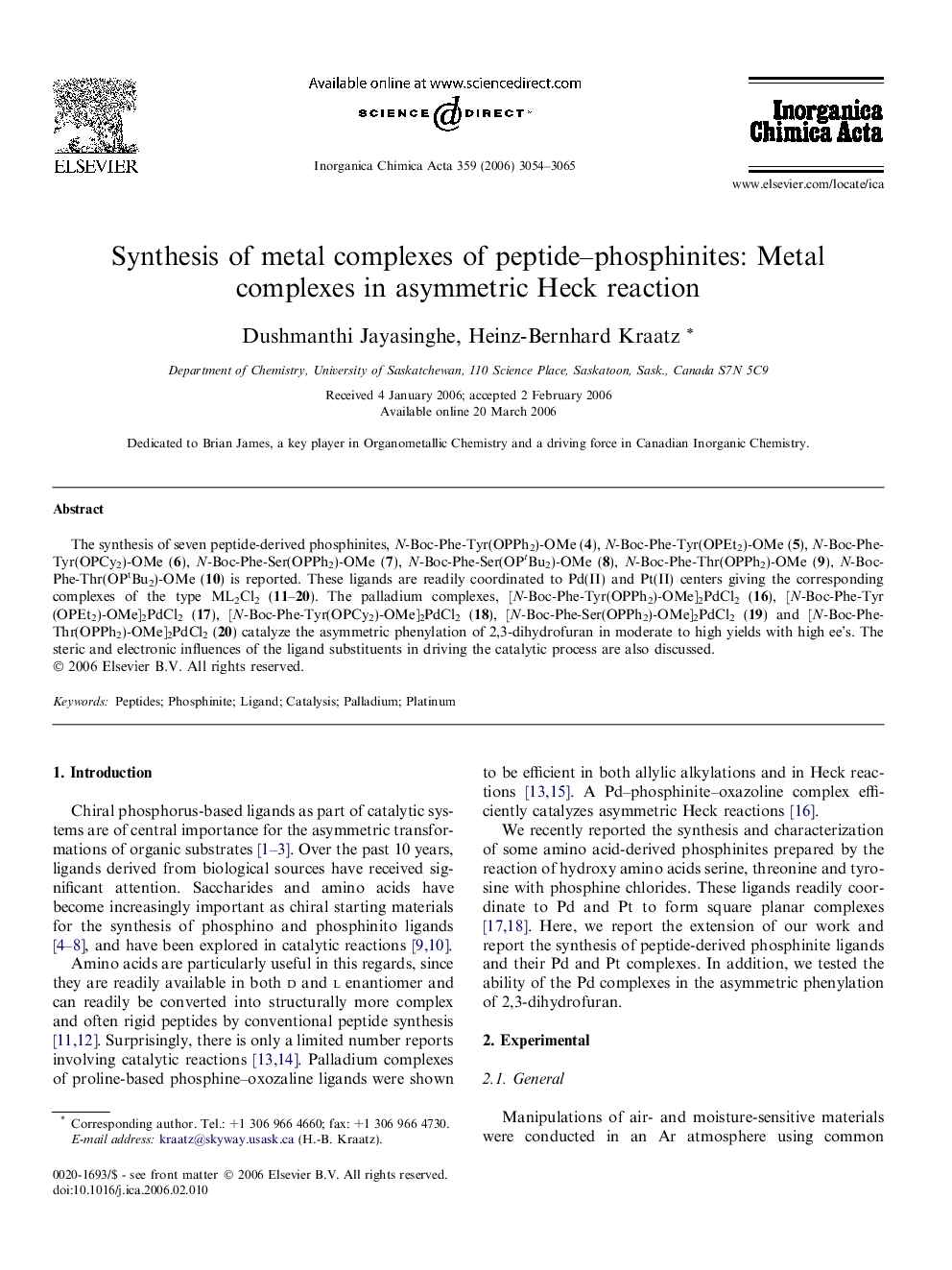| Article ID | Journal | Published Year | Pages | File Type |
|---|---|---|---|---|
| 1313049 | Inorganica Chimica Acta | 2006 | 12 Pages |
The synthesis of seven peptide-derived phosphinites, N-Boc-Phe-Tyr(OPPh2)-OMe (4), N-Boc-Phe-Tyr(OPEt2)-OMe (5), N-Boc-Phe-Tyr(OPCy2)-OMe (6), N-Boc-Phe-Ser(OPPh2)-OMe (7), N-Boc-Phe-Ser(OPtBu2)-OMe (8), N-Boc-Phe-Thr(OPPh2)-OMe (9), N-Boc-Phe-Thr(OPtBu2)-OMe (10) is reported. These ligands are readily coordinated to Pd(II) and Pt(II) centers giving the corresponding complexes of the type ML2Cl2 (11–20). The palladium complexes, [N-Boc-Phe-Tyr(OPPh2)-OMe]2PdCl2 (16), [N-Boc-Phe-Tyr(OPEt2)-OMe]2PdCl2 (17), [N-Boc-Phe-Tyr(OPCy2)-OMe]2PdCl2 (18), [N-Boc-Phe-Ser(OPPh2)-OMe]2PdCl2 (19) and [N-Boc-Phe-Thr(OPPh2)-OMe]2PdCl2 (20) catalyze the asymmetric phenylation of 2,3-dihydrofuran in moderate to high yields with high ee’s. The steric and electronic influences of the ligand substituents in driving the catalytic process are also discussed.
Graphical abstractPeptide-phosphinites are readily prepared by the reaction of hydroxyl amino acid containing dipeptides and alkyl- and arylphosphine chlorides. These ligands readily form complexes with Pd and Pt. The utility of these metal complexes is evaluated in the intermolecular asymmetric arylation of 2,3-dihydrofuran.Figure optionsDownload full-size imageDownload as PowerPoint slide
